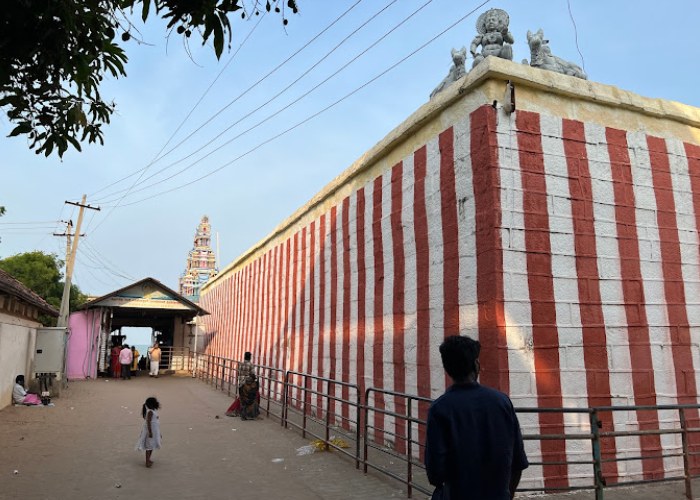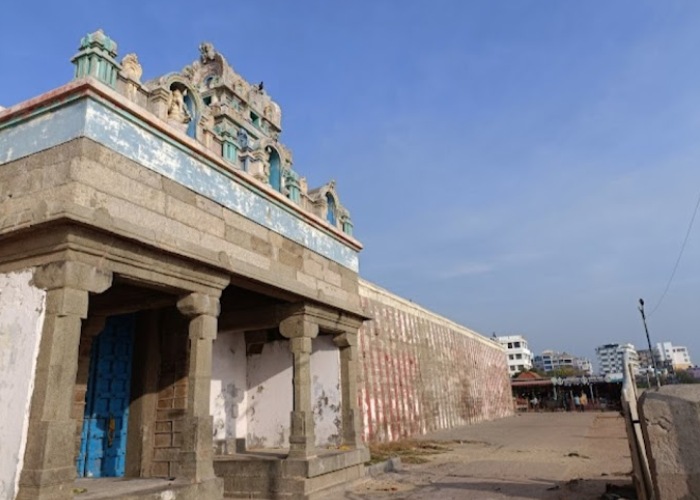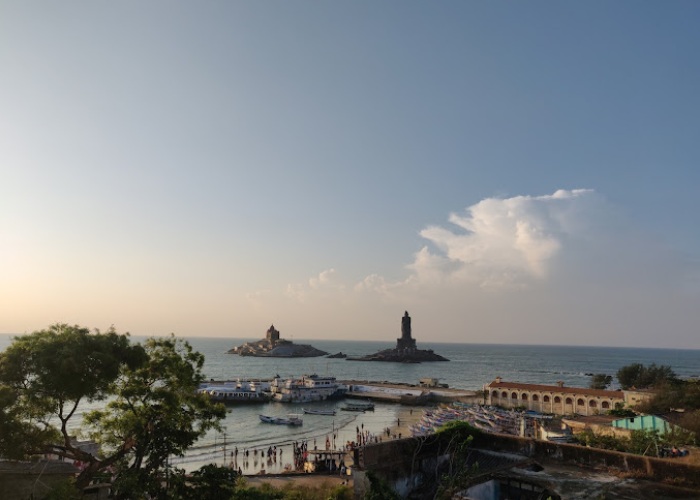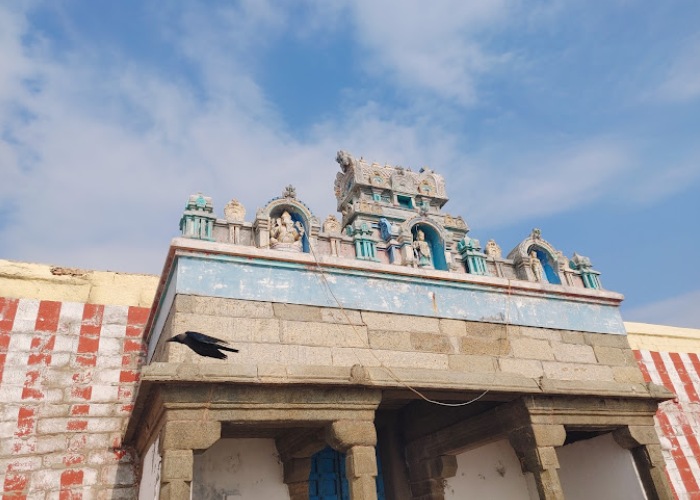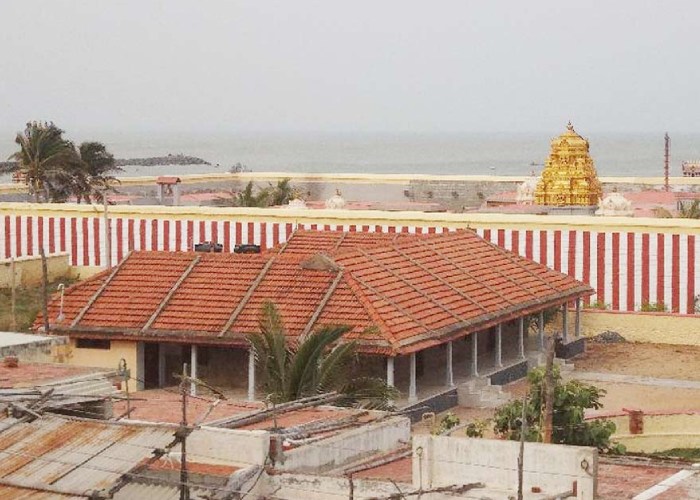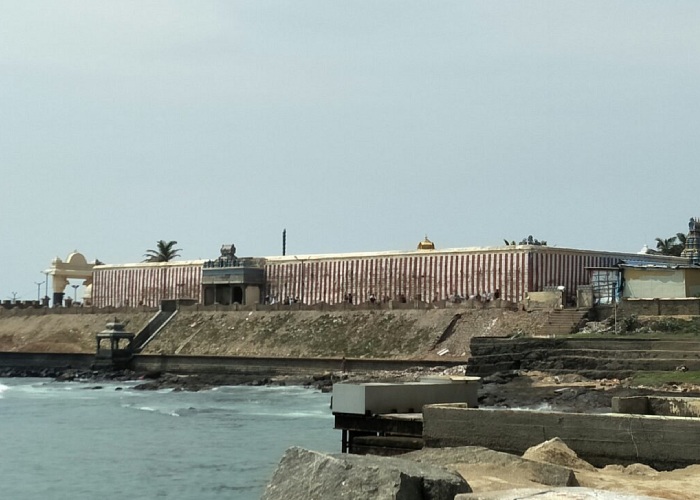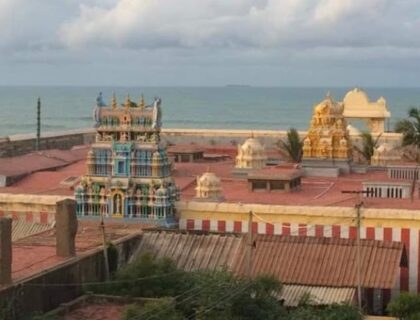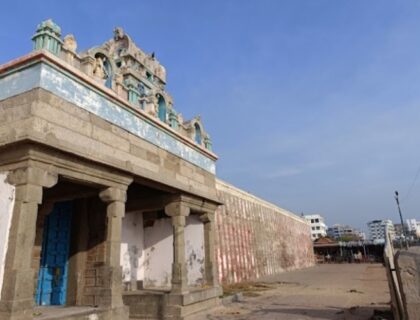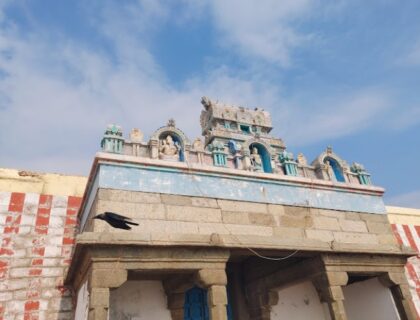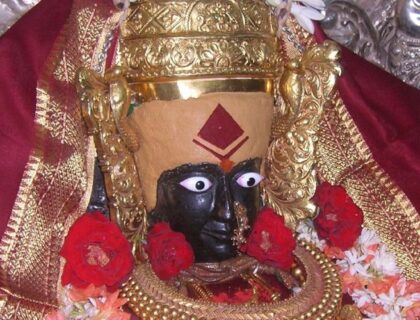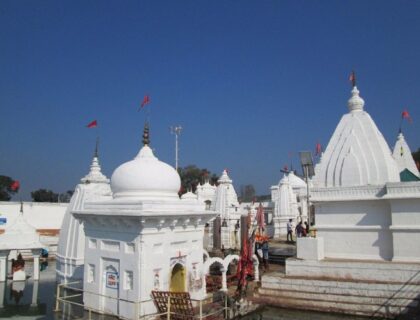Kanyashram Shaktipeeth Kanyakumari
The Kanyashram Shaktipeeth or Kanyakumari Bhagavathi Amman temple is an ancient temple located on the southernmost tip of mainland India in Kanyakumari, Tamil Nadu, India. It is one of the Shaktipeeth in India where a form of Parvati is worshipped. According to legend, the Sarvani Shaktipeeth Shri Kanya Kumari Bhagavathy Amman Temple is located at the spot where the right shoulder and the area around the spine of Sati fell.
The sacred and ancient temple in Kanyakumari is known by various names like Kumari Amman Temple, Devi Kanyakumari Amman Temple, Devi Kanya Kumari, and Bhagavathi Amman – Kanyakumari, etc. Dating back more than 3000 years, this temple is not only religiously significant but also has great historical importance. This ancient temple of Kanyakumari also presents mesmerising scenic beauty as it is located by the side of a vast spread of ocean
Story Behind Kanyashram Shaktipeeth
The goddess of Dakshayani, Sati, Parvati, or Durga—Hinduism’s most important woman and most powerful deity—is called Shakti. Durga Devi, Mahakali, and Gowri are the three main manifestations of Shakti, the power goddess. She is Adi Shakti’s avatar.
Sati was the Prajapati Daksha’s daughter, and she married Lord Shiva despite Her father’s wishes. Prajapati Daksha once put together a massive yagya, but he didn’t call his daughter and son-in-law. Sati was very saddened by Her father’s actions. When she got there, her father ignored the Sati and insulted her. She could not bear the insult of his husband (Lord Shiva) and She had jumped into the fire of Yagya and committed suicide. She passed away, but her body didn’t burn. Lord Shiva had taken His Virabhadra Rupa out of rage. Daksha’s head was cut off by him, but in the end, He forgave him by bringing him back to life.
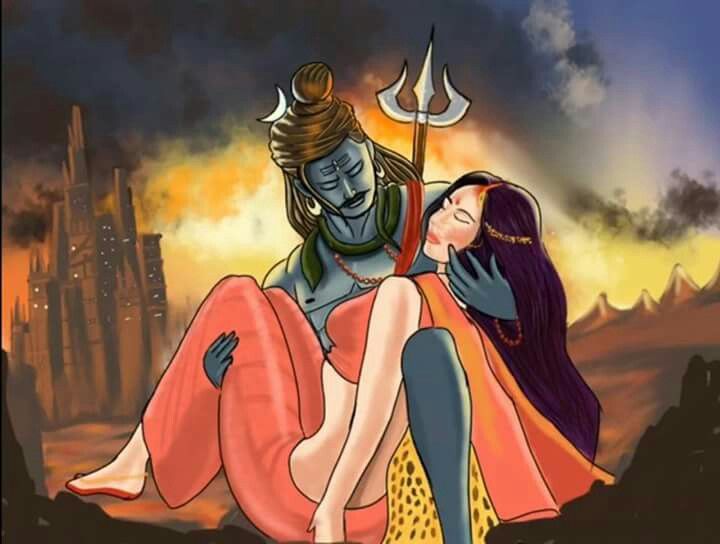
Lord Shiva, devastated, had taken Sati’s body and wandered the universe. Finally, Lord Vishnu used His Chakra to break Sati’s body into pieces. Each body part transformed into Shakti Pitha. The temple had emerged where the body part had fallen to the ground. In order to safeguard the Shakti Pitha, Lord Shiva created 51 Bhairava for each one.
It is regarded as one of the 51 Shaktipeethas where Lord Vishnu used His “Sudarshana Chakra” to break up Devi Parvati’s (alias Devi Sati’s) Spine during the “tandava” (rampage) of Lord Shiva, the beloved husband of Devi Parvati.
History of Kanyashram Shaktipeeth
The historical backdrop of Kanyakumari Sanctuary can be followed back in numerous antiquated sacred texts. The great Hindu epics Mahabharata and Ramayana include mentions of the Kumari Amman Temple. This temple is mentioned even in Sangam works like Manimekalai and Purananooru.
The legend that inspired the Kanyakumari Temple states that the demon Banasura had brutally enslaved all devas. He could only be killed by a virgin girl, according to the boon. Consequently, in response to the pleas and prayers of the devas, Goddess Parasakthi assumed Kumari’s virginal form in order to eliminate the demon.

According to legends, Lord Parasurama and Saint Narada asked the goddess to remain on Earth until the end of Kaliyuga. Lord Parasuram later developed a temple by the side of the sea; After that, he erected a statue of the Goddess Kanya Kumari. There are about 25 tirthas on the shores surrounding the temple. Sripada Parai, also known as the Vivekananda Rock Memorial, is another holy spot close to the temple. At the rock, you can see footprints left by the Goddess’s feet.
The architecture of Kanyashram Shaktipeeth
Committed to Devi Kanyakumari, Kumari Amman temple is over 3000 years of age, introducing noteworthy engineering. This ancient Temple was once a part of the Travancore Kingdom and is by the ocean. The fundamental god of the sanctuary, Devi Kumari is pointing toward the east. The goddess is depicted as a young girl wearing a garland on the idol. The nose ring of the divinity is known for its remarkable radiance. Additionally, numerous tales are associated with it.
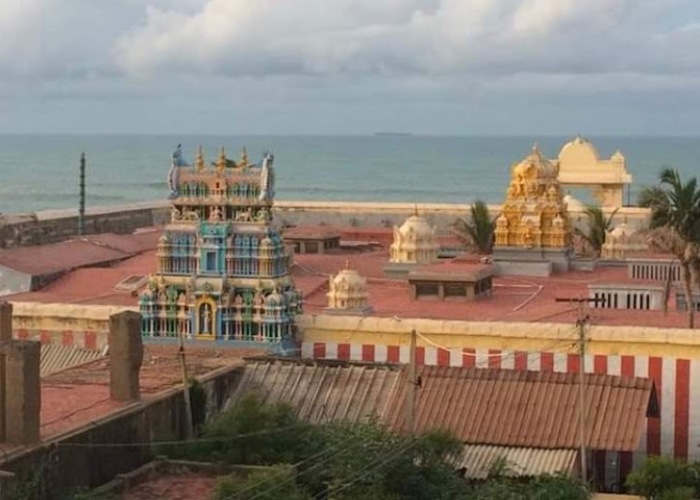
Strong stone walls surround Kanyashram Shaktipeeth Kanyakumari Temple. The northern gate is the main entrance to the temple. The majority of days, the temple’s eastern gate is closed. It is only open on special days and occasions, like new moon days in the Vrischikam, Edavam, and Karkidakam months.
In addition to Lord Surya Deva, Lord Ganesh, Lord Ayyappa Swamy, Goddess Balasundari, and Goddess Vijaya Sundari, the temple complex contains a number of other shrines. There is a well inside the sanctuary from where water is utilized for the abhishekas of the Goddess. It is known by the name of Moola Ganga Theertham.
Facts about Kanyashram Shaktipeeth
- Located in Kanyakumari, Kanyashram Shaktipeeth is one of the most sacred temples in the world, this temple is the home of Goddess Devi Kanya Kumari, referred to as the Virgin Goddess.
- Devi Kanya Kumari has been mentioned in Ramayana, Mahabharata, and the Sangam works Manimekalai, Purananuru and the Nārāyaṇa (Mahānārāyaṇa) Upanishad, a Vaishnava Upanishad in the Taittiriya Samhita of Krishna Yajur Veda.
- The shrine is accessed through the Western door. The eastern door is opened only on certain days of the year, such as on the new moon days in the months of Thai, Aadi (Karkidaka) July, during Navaratri and in the month of Kaartikai.
- Devi Kanya Kumari is the goddess of virginity and penance. It is a practice that people choose to receive the Diksha of Sanyasa from here in olden times.
- The temple is famous as the Devi Temple with a Diamond nose ring.
- The name of the Kalabhairava in Kanyakumari temple is ‘Nimish’ and the Shakti is ‘Sarvani’
- Kanya Kumari is believed to have been ruled by the Chera dynasty during the Sangam period and later came under the Travancore rulers.
- The presiding image is sported in a standing posture with an Akshamala in her hands. There is an image of a lion in her pedestal indicating that she is the form of Adi Parashakti.
Festivals In Kanyashram Shaktipeeth
- Durga Puja. (Winter) – Devotees celebrate Navaratri at this temple in the month of Ashwin (Sep-Oct).
- Navaratri. (Summer) – They celebrate other Navaratri in the fortnight of the Chaitra (March-April). Every nine days, they worship Navadurga (nine Durgas).
- Diwali – Diwali is one of the most admired and auspicious festivals in the town.
- Mahashivratri– A grand fair is organized at the temple during the occasion of Maha Shivratri.
- Ram Navami is the other festival celebrated with great pomp and splendour.
How to Reach Kanyashram Shaktipeeth
Kanyashram Shaktipeeth is situated on the seashore of Kanyakumari in Tamil Nadu, Kanyakumari is well connected by roadways, airways and railways.
By Air: The nearest airport to Kanyashram Shaktipeeth is at Thiruvananthapuram at a distance of about 100 kilometres.
By Railway: The nearest rail station is Kanyakumari Railway Station which is around 1 km away from the Kanyashram Shaktipeeth temple.
Nearest Bus Station/Cabs: The Kanyashram Shaktipeeth temple is at a distance of 1 km away from the Kanyakumari Bus Stop.
Location
Facilities
- Drinking Water
- Pooja Item Shops
- Prasad Shops
- Restaurants Nearby
- Resting Room

